What is Domestic Violence?
Domestic Violence is a repeat pattern of abusive behaviors that are used to gain or maintain power and control over a person or the relationship. It may also be referred to as Intimate Partner Violence (IPV), Domestic Violence (DV), or Dating Abuse (DA).
Abusive behaviors include any physical, sexual, emotional, economic or psychological actions or threats of actions that influence another person or stop them from exiting the relationship.
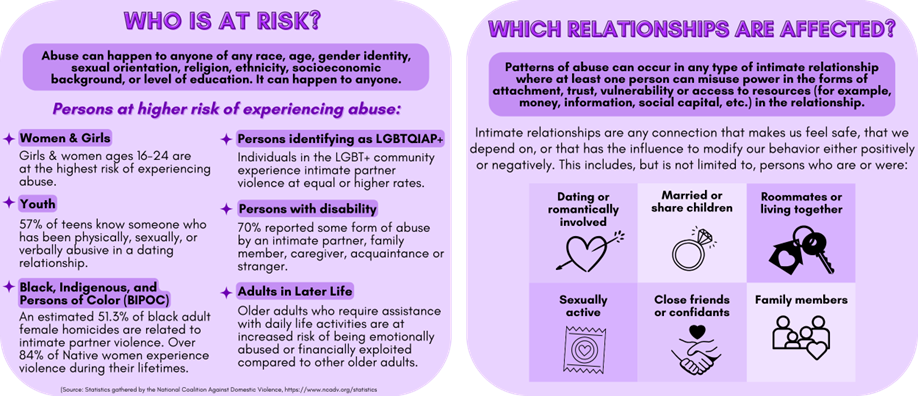
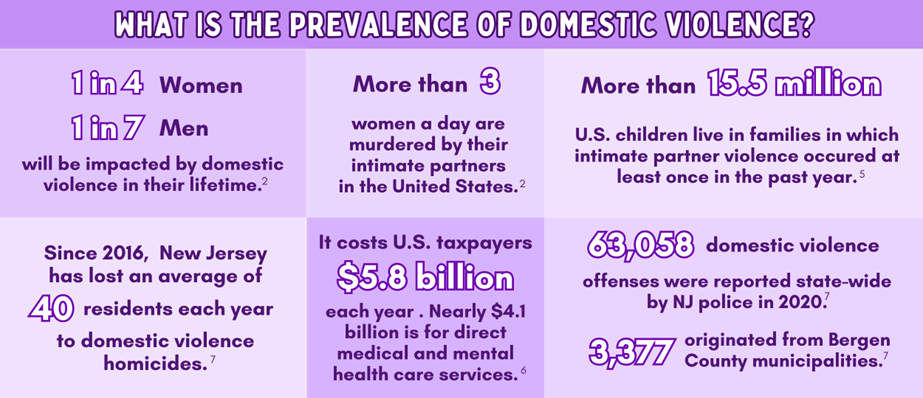
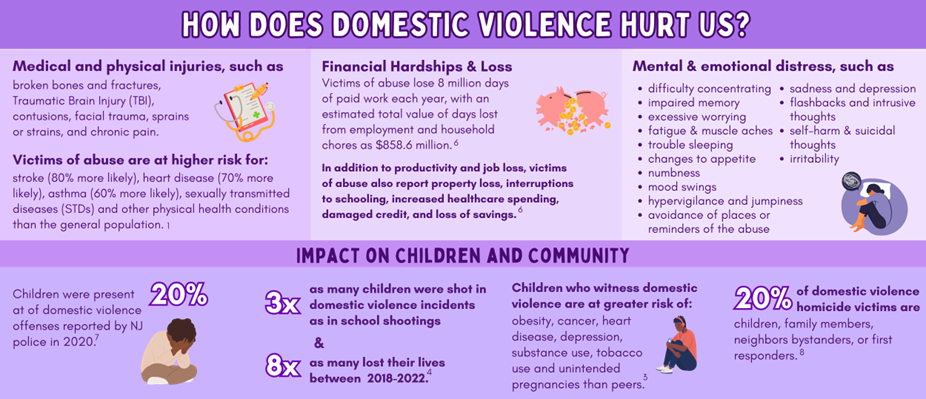
References:
- Adverse Health Conditions and Health Risk Behaviors Associated with Intimate Partner Violence, Morbidity and Mortality Weekly Report. February 2008. Centers for Disease Control and Prevention. Available at http://www.cdc.gov/mmwr/PDF/wk/mm5705.pdf
- Black, M.C., Basile, K.C., Breiding, M.J., Smith, S.G., Walters, M.L., Merrick, M.T., Chen, J., & Stevens, M.R. (2011). The National Intimate Partner and Sexual Violence Survey (NISVS): 2010 Summary Report. Atlanta, GA: National Center for Injury Prevention and Control, Centers for Disease Control and Prevention.
- Centers for Disease Control and Prevention. (2014). ACE study: Major findings. http://www.cdc.gov/violenceprevention/acestudy/findings.html
- Mascia, J. (2023, June 2). Dangerous homes: guns and domestic violence exact a deadly toll on kids. The Trace. https://www.thetrace.org/2023/03/guns-domestic-violence-child-deaths/
- McDonald, Renee, Ernest N. Jouriles, Suhasini Ramisetty-Mikler, et al. 2006. Estimating the Number of American Children Living in PartnerViolent Families. Journal of Family Psychology 20(1): 137-142.
- National Center for Injury Prevention and Control. Costs of Intimate Partner Violence Against Women in the United States. Atlanta (GA): Centers for Disease Control and Prevention; 2003.
- New Jersey Thirty-Eighth Annual Domestic VIolence Offense Report 2020. Trenton (NJ): New Jersey Department of Law and Public Safety, Division of State Police, Uniform Crime Reporting Unit; 2020
- Smith, S. G., Fowler, K. A., & Niolon, P. H. (2014). Intimate partner homicide and corollary victims in 16 states: National Violent Death Reporting System, 2003–2009. American Journal of Public Health, 104(3), 461–466. https://doi.org/10.2105/ajph.2013.301582
What Causes Domestic Violence?
Domestic violence is not a disagreement, an anger management issue, or a normal part of an intimate relationship. Though domestic violence is a complex issue influenced by many factors at the individual, interpersonal, community, and societal levels—we know that it has nothing to do with love and it is never the victim’s fault.
Domestic violence is a systematic pattern of abusive behavior with the intent to dominate or maintain control over another person. Research tells us that the abusive parties are guided by beliefs and attitudes that make them feel entitled or justified in using violence, force, intimidation, manipulation, and other oppressive tactics to obtain their needs or desires within intimate relationships.
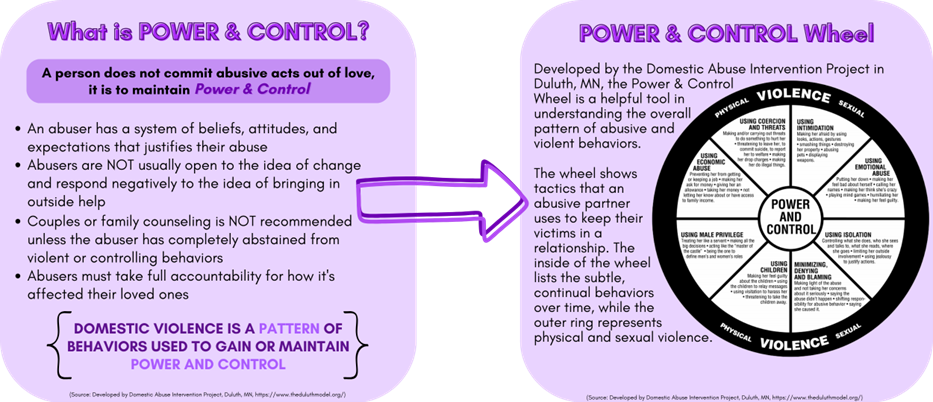
These behaviors are “learned” or experientially reinforced over time when the abusive party observes that abuse “works” as a relationship strategy or does not solicit negative repercussions in the environments around them. The abusive party is often not ignorant to this fact and will utilize their power, resources, advantages, or privileges within the context of their relationships to minimize the risk of “getting caught” or to sabotage the victim’s efforts to rebalance the scales of power. The abusive party also learns to use violence as a tool of “enforcement” in the relationship, meaning that any efforts by a victim to challenge abusive beliefs and behaviors are usually met by the abusive party making things worse and tightening their grip on the victim.
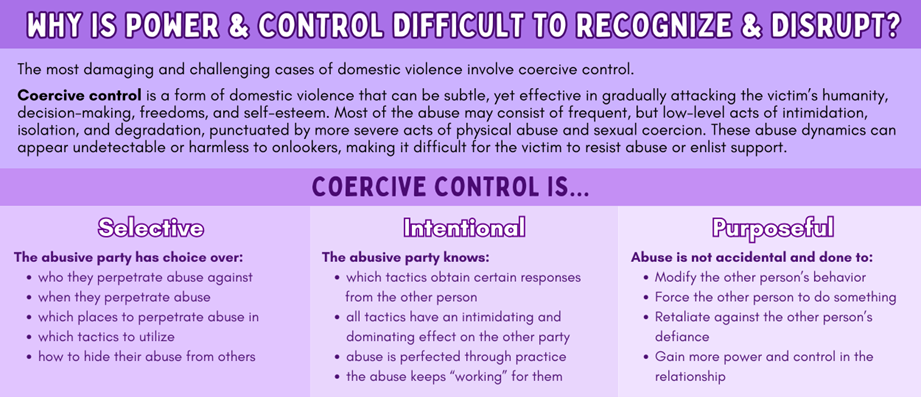
Abuse is a choice and only the abusive party is responsible for reforming or rehabilitating these behavioral patterns—never the victim. For this reason, ADV does NOT recommend that persons or couples experiencing domestic violence try to resolve domestic violence issues within couples counseling settings. We also extend strong caution to victims of abuse when the abusive party elects to participate in individual therapy because unless the abusive party is taking genuine accountability for their behavior and committing themselves to nonviolence, this is usually NOT an effective solution to domestic violence either. It our professional experience that the abusive party must be willing to accept responsibility for their actions without blaming the victim to make meaningful gains towards nonviolence. Otherwise, therapy can become yet another place where the abusive party will have abusive beliefs reinforced and may even pose safety risks to any participating victim.
Instead, we encourage victims to engage in healing services of their own to build their awareness, practice safety planning, and expand their support networks. We also recommend that any person who has perpetrated domestic violence or coercive control immediately enroll in an Abuse Intervention Program and abstain from any acts of violence for at least a year before attempting any couples counseling with a consenting victim of abuse.
We also believe that the BEST responses to abuse prioritize victim or survivor safety and function as part of a larger, unified, and coordinated community response against domestic violence and coercive control. Victims of abuse are often isolated, disempowered, and worn down by their experiences of abuse and efforts to escape it. At ADV, we promote giving survivors choice and voice over the services and supports that they feel they need most in the moment to truly deliver empowering and survivor-centered responses to abuse. If our agency is not able to provide specific services, supports, or reliefs, we provide education and referrals to community resources to expedite the average time it takes a survivor to access all needed resources.

In addition to connecting victims and survivors to safety and comprehensive supports that can help them recover from the multi-faceted layers of harm stemming from abuse, we must empower the larger community to adopt effective, proactive bystander behaviors. The public helps survivors and victims of domestic violence whenever we challenge any behaviors, practices, policies, or cultural norms that treat abuse as normal or inconsequential. It is also equally as important to hold persons perpetrating abuse accountable for their choices and any harm done to victims, families, and the larger community. See our Take Action tab for more information on what you can do to support survivors in our community.
What are the Signs of Abuse and What Can I Do About it?
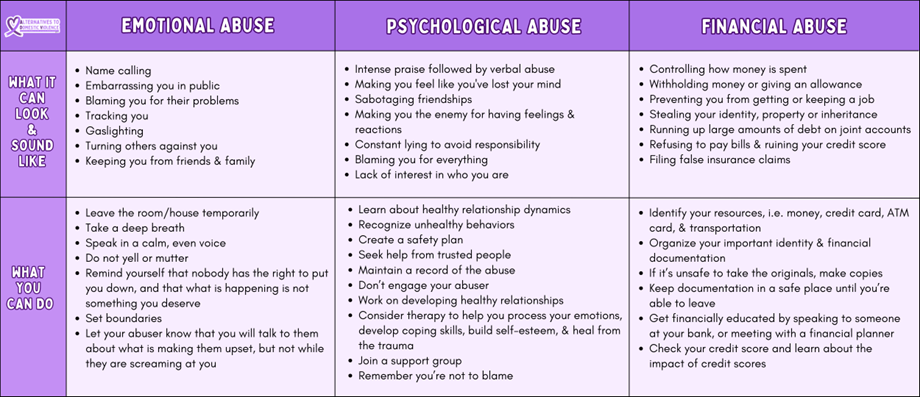

Would you like to speak to someone about the information above? Our counselors are available to speak 24/7 through our crisis hotline: 201-336-7575. See our Connect With Us tab for more options.
